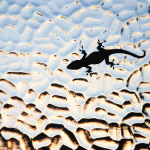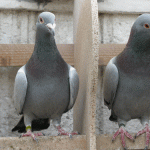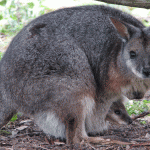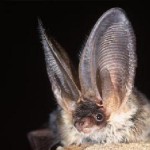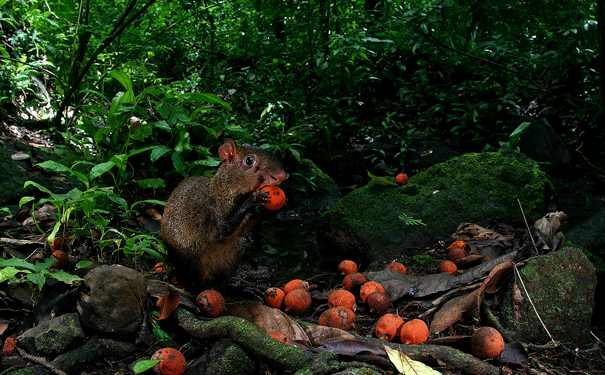
An agouti eating one of the palm seeds from its cache. Image: Christian Ziegler
Researchers have discovered a textbook example of plant-animal mutualism in Panama.
It seems absurd that the squirrel-sized agouti — a species of rainforest rodent — is the main seed-spreader of the ancient black palm tree. For this role was once performed by the massive mastadon, and other extinct elephant-like megafauna such as gomphotheres, which would have swallowed the trees’ large seeds whole and defecated the endocarps into different locations.
However researchers from North Carolina State University, US, have discovered how these cheeky rainforest rodents unintentionally act as seed dispersers (and “˜rainforest saviours’) by burying and stealing the seeds of the black palm. The scientists believe this strange behaviour is what has allowed the ancient tree to survive for over 10, 000 years after its original seed-spreaders went extinct.
The team observed the erratic burying and stealing behaviour of agoutis in a yearlong study in Panama. They attached small radio transmitters to more than 400 seeds and used remote cameras to see the agoutis in action.
The results showed that the animals would hoard the seeds like squirrels only to dig them up again, and would often steal from their neighbours underground seed loot. In fact, the researchers found that up to 85 per cent of black palm tree seeds were buried in agouti caches.
“We knew that these rodents would bury the seeds but we had no idea that there would be this constant digging up of the seed, moving it and burying it, over and over again,” said Roland Kays, co-author of the study published in the Proceedings of the National Academy of Sciences, in a press release.
Furthermore, the researchers found that the agoutis would initially bury the seeds at short distances from the tree but then quickly dig them up and move them a bit further away. One seed tagged by the researchers was moved 36 times and ended up travelling 208 metres away from its original location. Around 35 per cent of the seeds were found to have spread over 100 metres by the agoutis’ strange caching technique.
The weirdest part about these funny rodents is that they don’t even seem all that keen on eating the seeds. Some of the radio-tagged seeds were buried and reburied for over 200 days before an agouti decided it was time to be eaten. Perhaps they just like the thrill of stealing them from other agoutis and hoarding them in their secret loot.
Although previous studies have shown rodents to be inadequate seed dispersers, the researchers have presented a compelling exception. Their findings suggest that thieving scatter-hoarding agouti communities are definitely capable of being a substitute for the extinct magefaunal seed dispersers of tropical trees. Their methods are just a bit stranger and more erratic.
Source: Eurekalert

